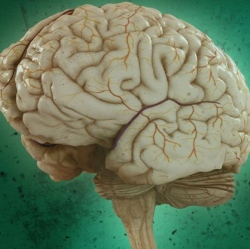
You’ve probably never given much thought to the fact that picking up your cup of morning coffee presents your brain with a set of complex decisions. You need to decide how to aim your hand, grasp the handle and raise the cup to your mouth, all without spilling the contents on your lap.
A new Northwestern University study shows that, not only does your brain handle such complex decisions for you, it also hides information from you about how those decisions are made.
“When you pick up an object, your brain automatically decides how to control your muscles based on what your eyes provide about the object’s shape,” said Yangqing ‘Lucie’ Xu, lead author of the study and a doctoral candidate in psychology at Northwestern. ”When you pick up a mug by the handle with your right hand, you need to add a clockwise twist to your grip to compensate for the extra weight that you see on the left side of the mug.
“We showed that the use of this visual information is so powerful and automatic that we cannot turn it off. When people see an object weighted in one direction, they actually can’t help but ‘feel’ the weight in that direction, even when they know that we’re tricking them,” Xu said.
Your lying eyes*
The researchers conducted two experiments. In the first, people were asked to grasp a vertical stick with a weight hanging from its left or right side. People easily reported which side they felt the weight was on, even when they had their eyes closed.
The researchers then used a set of mirrors to occasionally flip the view of the object so that it looked like the weight was on the left, when actually it was on the right. And although people were told to report on which side they felt the weight (with their hands), the visual image strongly influenced the direction that they felt the weight was coming from, especially when the weights were lighter.
In the second experiment, the researchers tried harder to convince people to ignore the visual information by carefully explaining the nature of the “trick.”
